Introduction:
One of the most common problems encountered when laying modular imported flagstones or decorative patio flags to a random layout is the variation in joint width that results from using flags of various sizes.
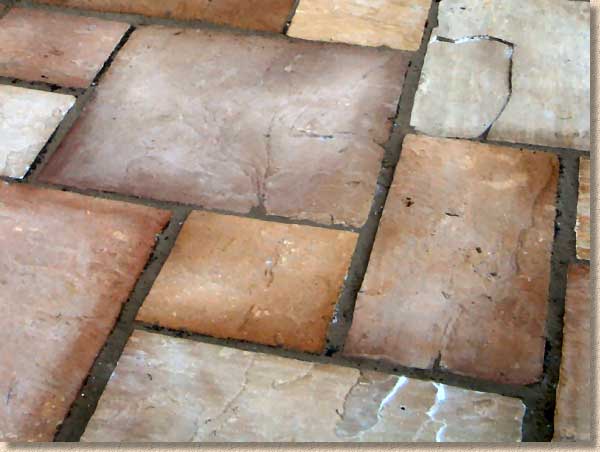
This problem mostly affects random layouts: it tends not to affect coursed or patterned layouts because the joints created with those layouts occur in a regular and/or uniform manner.
A simple pictorial explanation of the problem is shown below.
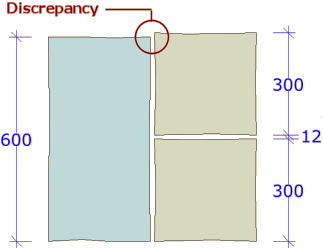
Basically, two 300mm wide units do not equate to one 600mm wide unit: there's the width of the joint to take into account. In the example shown opposite, a standard 12mm joint has been shown, which results in the uppermost 300x300mm flag being displaced or "overhanging" by that same 12mm. If we were to consider, say, three of the 300mm flags and a single 900mm wide unit, then the discrepancy or displacement would be a somewhat unmissable 24mm.
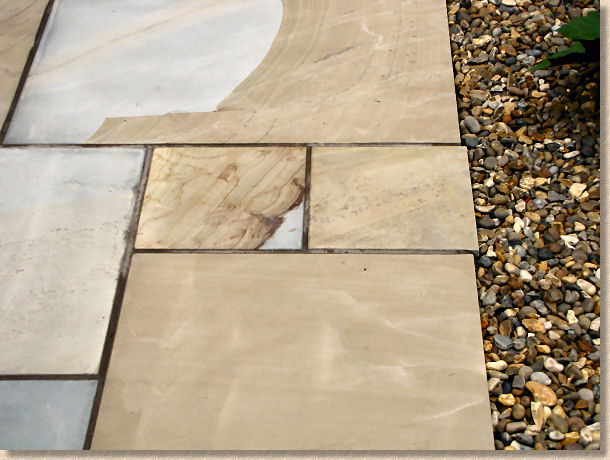
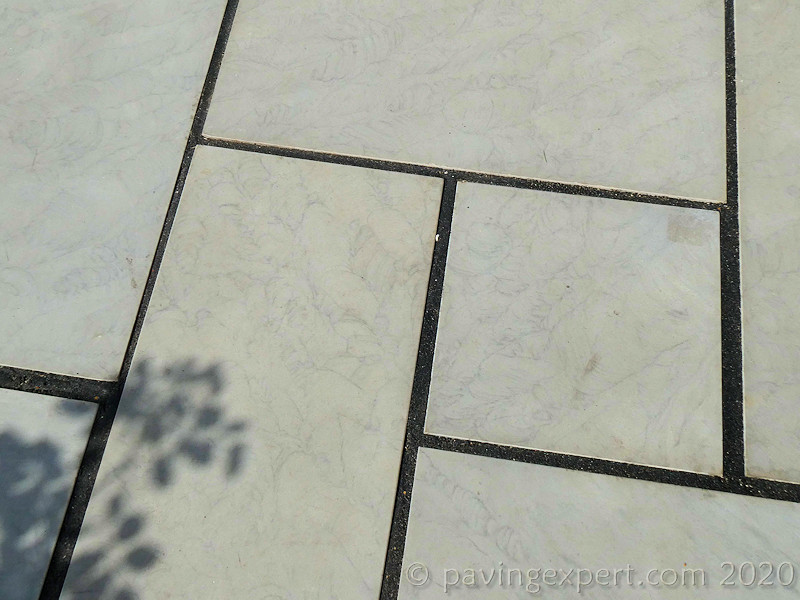
Some suppliers have attempted to resolve this problem by creating a slightly smaller flagstone that takes account of the need for a joint.
This is all well and good, but does nothing for those situations where this smaller flag isn't used. For example, two 450mm wide flags would not equate to one 900mm wide flag, for exactly the same reason as illustrated above. It would not be practical for the suppliers to provide a full range of "reduced size" flags, as they cannot predict how the flags will be used.
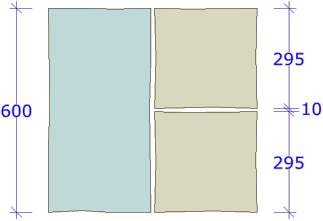
Assuming that most, if not all of the flags provided within a particular range are modular and not of reduced size, there are three possible solutions to overcome the discrepancy problem:
- Omit the joint completely
- Cut the flags on-site as required
- Vary the joint width to even out the discrepancy as far as practical
Given that omitting the joint is impractical and bad practice, and that fiddling the joint width is much, much easier than cutting, the third option listed above is what tends to be done on most projects, and is the method that will be outlined in the remainder of this page.
Joint Balancing
So: the most practical solution is to vary the joint width, a process we refer to as 'balancing', because the intention is to create a paved area where the joints may be of variable widths but the overall impression is one of them being reasonably regular, with none of them excessively narrow and none that are gaping wide, a 'balanced appearance'.
However, this regulation or balancing of joint width is NOT done as the flags are laid, but is undertaken as a separate exercise once a reasonable area of paving has been laid. This is because it's almost impossible to predict how a joint will look in relation to the surrounding flagstones until a sizable area is covered, so calculating that such-and-such a joint needs to be just 9mm wide rather than the more usual 12mm is a waste of time. Remember: this is an exercise in aesthetics rather than mathematical precision - the looks are far more important than the accuracy of each joint, and if it looks right, it probably is right.
The flagstones are laid in the usual manner, with standard width (12mm) joints as far as practical. If the receiving edges are being buttered , then the joints will not be topped up or pointed until after the balancing has been completed. This should result in a layout something like that shown below....
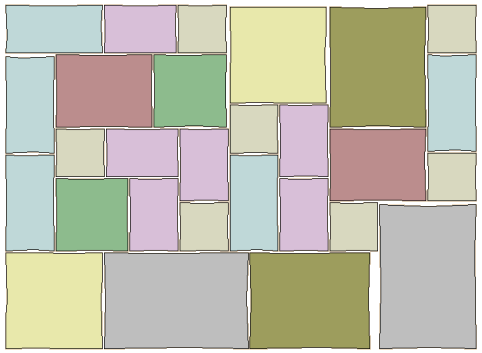
In this example, the flags have been laid with a minimum joint width of 12mm. This has resulted in some worrying displacement, particularly in the lower right-hand corner. This is a direct consequence of the fact that, along the transverse joints between the two courses of dimensioned flags, the upper course incorporates six inter-flag joints compared to just two inter-flag joints on the lower course. This results in a 48mm displacement(4 @ 12mm) at the right-hand end.
The actual joints widths are shown in the image below...
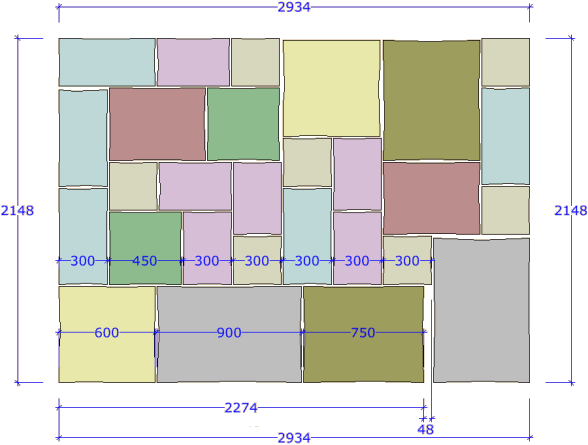
It should be obvious that the joints between the flags on the lowest course need to be 'tweaked'. They can be widened to more evenly distribute that 48mm displacement, but with only four inter-flag joints available along that bottom edge, that would involve doubling the current width of each joint from 12mm to 24mm.
While this would be acceptable, some clients might consider 24mm joints to be excessively wide. After all, they are paying for square metres of paving, not square metres of mortar jointing, and given that the flags cost pounds while the jointing costs pennies, it's the flags they want to see, not the stuff in between.
A simple way to reduce the impact of opening out the joints to 24mm width would be to reduce the width of the joints between the smaller flags on the upper side of that long, transverse joint. By reducing each joint to 9mm, a reduction of just 3mm, the total displacement along that joint is reduced by 18mm (6 @ 3mm) to just 30mm, which means the four lower joints only need to be widened by 7½mm (to 19½mm) rather than 24mm.
The flags can be levered into a new position using a spade to prise open the joint. A small nailbar, crowbar or block alignment bar may also be used. Take care to avoid damaging the arris of the flagstones being moved: use a 'cushion' of thin plywood if necessary.
Other joints throughout the paved area are similarly adjusted to balance out any discrepancies. The finished result is shown below...
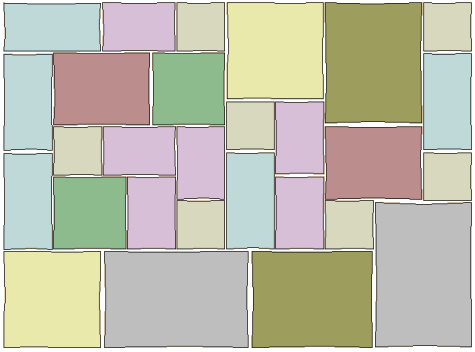
...and the widths of the balanced joints are given in this final diagram...
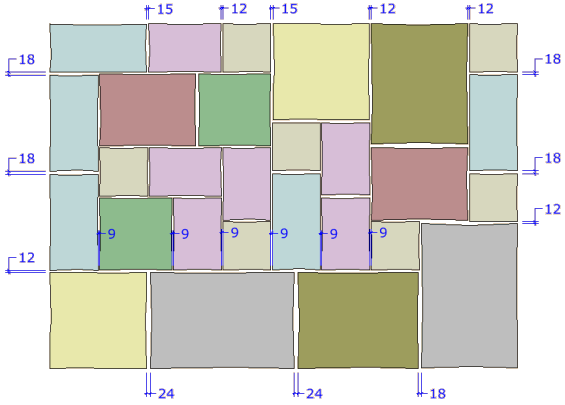
Yes: there is still some noticeable variation in joint width, but when the above diagram is compared with the first in this sequence, it should be apparaent which, of the two, is more visually appealling.
Once joint widths have been balanced, and the laying operative feels that the result is just about as good as possible, the joints can be pointed or topped-up as required.
